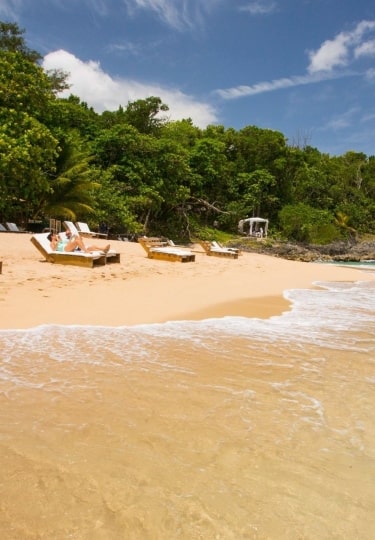The best time to visit Jamaica is during the dry season, from mid-December through April. The sunny days and pleasant temperatures create optimum conditions for enjoying the beaches, rainforest, markets, and towns.
Summer, especially July, when rainfall dips, is also a good time to visit. If there is rain, it’s typical of the tropics, coming in short, sharp showers that fall late afternoon.
Visiting Jamaica By Season
Summer
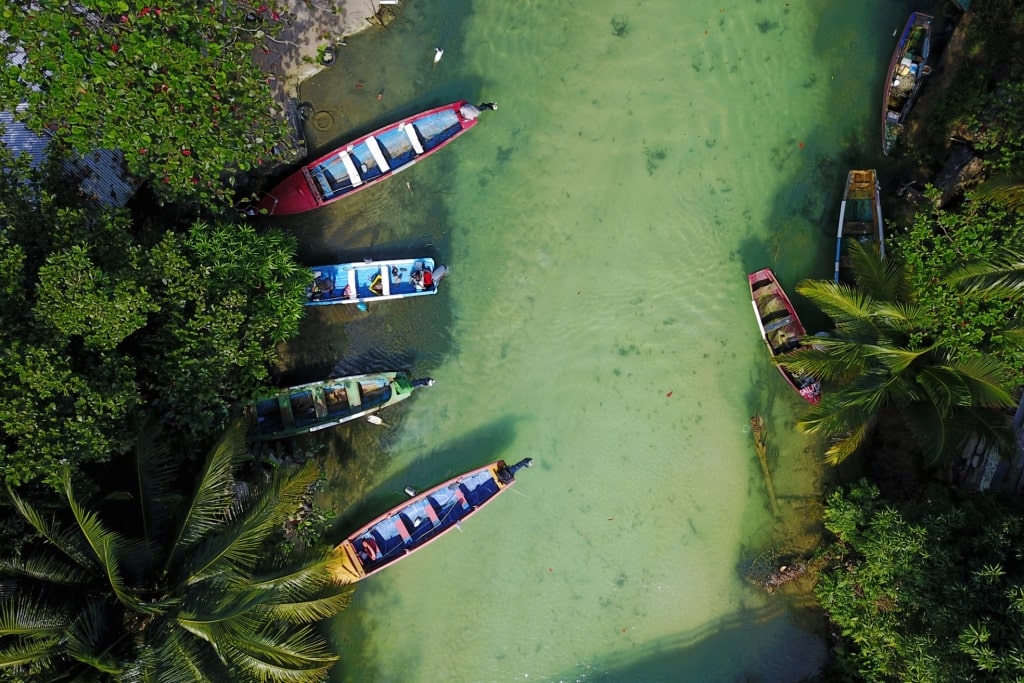
White River
Summers are sunny, with temperatures averaging 84℉ (29℃) and reaching highs of 90℉ (32℃) in July and August.
Although summer is officially part of Jamaica’s rainy season, precipitation hovers around four inches (102 mm) in June and August, but drops to three inches (76 mm) in July, making this a good time to visit. Raft the Martha Brae River, go whitewater tubing on the White River, and cool off by swimming and surfing.
Fall
In fall, the heart of the rainy season, precipitation increases to an annual high of 9.8 inches (249 mm) in November. Temperatures average 82℉ (28℃), reaching highs around 88℉ (31℃). The humidity can be intense and storms can pass through up to November.
Even though showers can be heavy, they often occur in the afternoon and don’t last more than a few hours. Take advantage of the high water levels by rafting and carefully climbing the rock ledges of Dunn’s River Falls, one of the best places to visit in Jamaica. Use the rainy times to browse shops, or historic great houses like Rose Hall Great House.
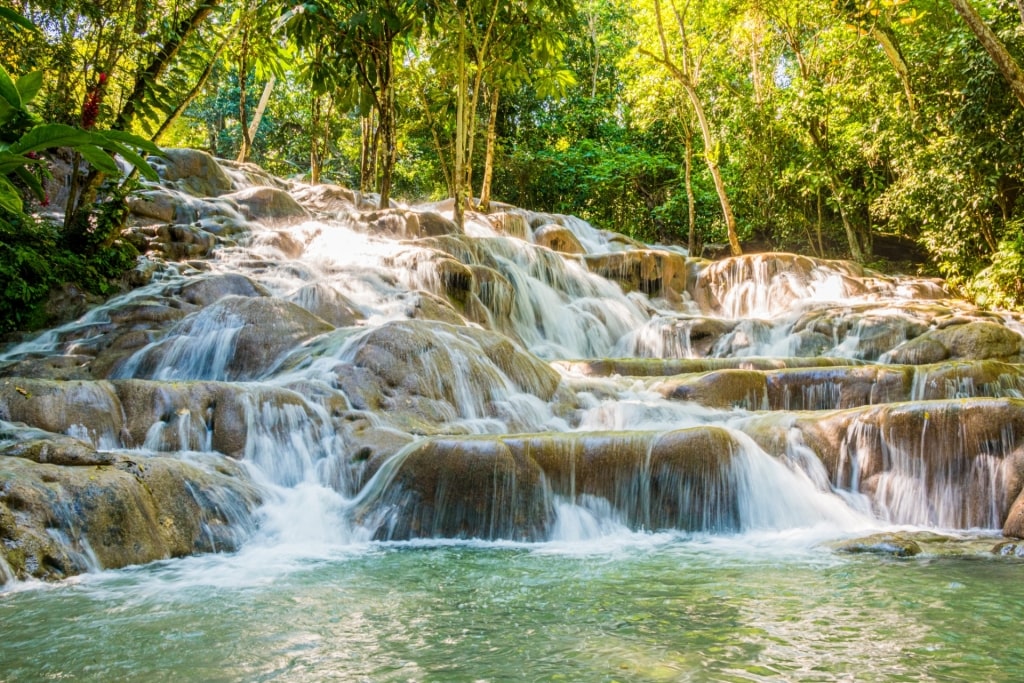
Dunn’s River Falls
Winter
Average temperatures in winter are 82℉ (27.7℃). February, the winter’s driest month, is reckoned to be the best time to go to Jamaica. Precipitation decreases in Ocho Rios from winter highs of eight inches in December to February lows of 4.7 inches (119 mm). This is also the high season, when the island is at its busiest, especially around Christmas and New Years.
In winter, swim, sun, hike, bobsled down Mystic Mountain, and enjoy many other outdoor activities that Jamaica is known for.
Spring
In spring, between March and May, the island blooms with abundant tropical flowers and pleasant temperatures average around 83℉ (28℃). May is spring’s rainiest month, with precipitation averaging 6.5 inches (165 mm).
Since showers tend to come in short bursts, there’s still plenty of sunshine for sailing, swimming, rafting, and ziplining.
Read: Best Things to Do in Falmouth
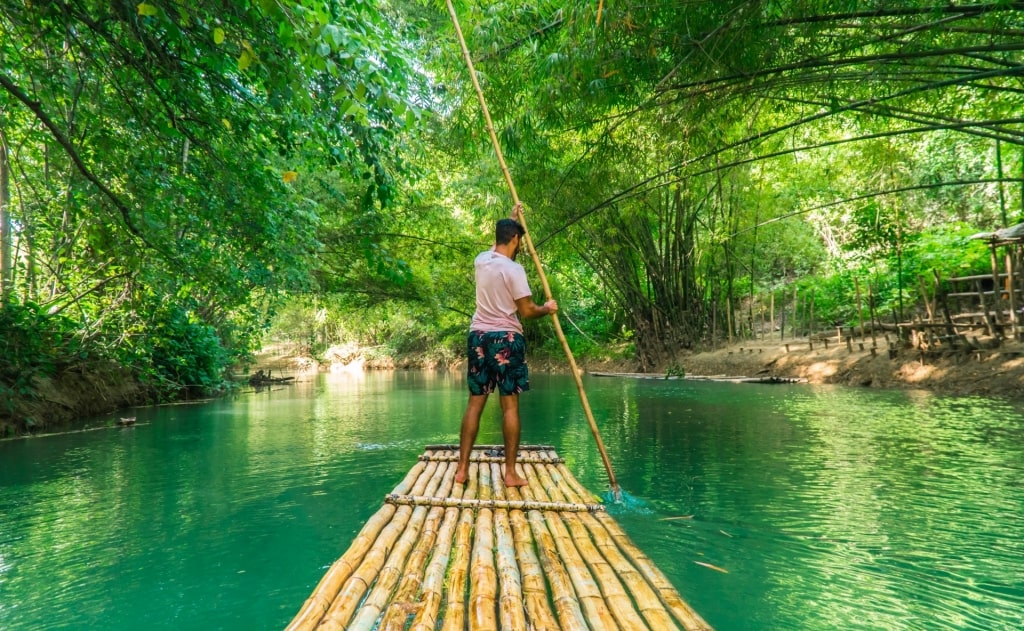
Martha Brae River
When Is Rainy Season?
Jamaica’s rainy season begins in May and continues through November. In July, there’s a lull as Jamaica’s rainfall drops to about three inches (76 mm) from June highs of more than four inches (103 mm).
Rainfall peaks in November, the wettest month, at 9.8 inches (249 mm).
When Is High Season?
The island’s high season runs from mid-December through April. The sunshine and pleasantly warm temperatures entice visitors, especially those fleeing cold weather.
This is when Jamaica is at its busiest, but nonetheless, high season is a great time to visit for uninterrupted sunny days.
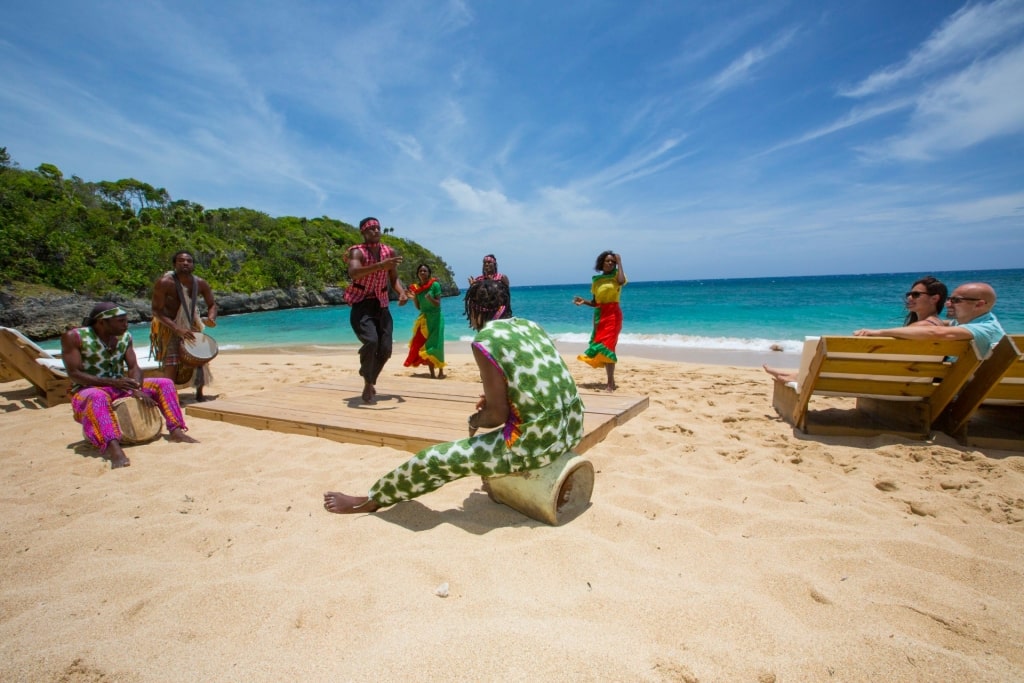
Bamboo Beach
When Is Shoulder Season?
Shoulder season starts in May, spring’s rainiest month, and continues through June, July, and August. There’s a second shoulder season, after the storm season has ended in November, with the first couple of weeks of December an excellent time to get some tropical sunshine before the holidays.
When Is Low Season?
September, October, and November, Jamaica’s rainiest months, constitute low season. By all means visit during these months; just be prepared for the possibility of some rain.
Interested in visiting Jamaica? Browse Celebrity’s cruises to Jamaica and book your escape.
